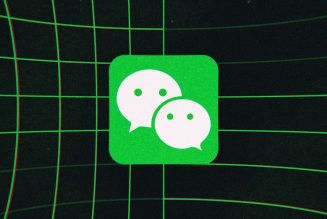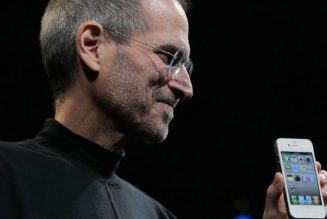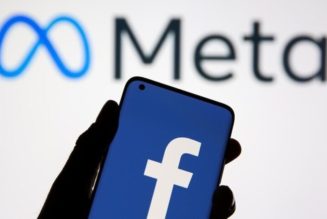Streaming services are coming to YouTube. The company is rolling out a new feature called Primetime Channels that will bring shows and movies from more than 30 services directly into the YouTube interface. It’s a big bet for YouTube that it can be the cable bundle of the future and that its unparalleled audience will make streaming services buy into the idea.
YouTube has signed up 35 partners for the launch, from big-name streaming services like Paramount Plus and Epix to niche offerings like The Great Courses and Magnolia Selects. (Another service, NBA League Pass, is coming soon.) Each one will operate essentially like any other YouTube channel, with a curated homepage and a bunch of videos. Those videos will show up in the Movies and TV section of the YouTube app, as well as in search results, recommendations, and elsewhere around the platform. You’ll be able to leave a comment and like or dislike the video — all that’s missing is view counts.
Really, the movies and shows only have one distinguishing characteristic: a neon green button that says “Watch now” if it comes from a service you subscribe to or “Pay to watch” if you’re not signed up.
It’s all extremely YouTube-y, as if YouTube just turned a bunch of movie studio executives into creators — which is precisely the idea. For a number of reasons. For one thing, “it is frustrating to have to hop from app to app to manage your subscription across apps,” says Erin Teague, the head of sports, movies, and shows at YouTube and the leader of the Primetime Channels project. This is a line you hear from a lot of tech executives — Streaming is too complicated! We can fix it! — but YouTube’s case is stronger than most. Two billion people already use the service every month, most already have a Google account, many have already connected their credit cards, and YouTube can simplify everything else.
It’s also a natural fit for YouTube, where people already spend time watching trailers, recaps, and all manner of other content about their favorite shows and movies. “You’ll watch trailers on YouTube and leave YouTube to go start from scratch on the streaming service,” Teague says. “So we were like, ‘What would happen if we just collapsed that experience and made it convenient to watch all this content in one place?’”
The new YouTube experience doesn’t prize expensive shows and movies above normal YouTube creators
There’s a bold statement about the future of entertainment in all this, too. The new YouTube experience doesn’t prize expensive shows and movies above normal YouTube creators, Teague says — it won’t rank them first in search results or promote them more aggressively in recommendations. Teague says she does see the types of content differently, referring to “official content” and “shoulder content” to describe the difference between the shows themselves and the stuff about the shows, but says she doesn’t think it makes sense to prioritize one or the other except for individual users.
YouTube has been building toward a service like Primetime Channels for a long time. The company has long known that “official content” was the platform’s biggest hole and that it didn’t make sense to offer a thousand videos with detailed breakdowns of every trade made by the Billions crew but not the episodes themselves.
The problem was Hollywood, which largely had no interest in YouTube’s idea — companies preferred to build their own destinations rather than let some other platform own the user experience. YouTube tried to partner with services, then tried to make its own content, then built a whole new cable-replacement service in YouTube TV. Now, with Primetime Channels, it appears to be getting what it always wanted.
%2Fcdn.vox-cdn.com%2Fuploads%2Fchorus_asset%2Ffile%2F24157003%2FPrimetime_Channels_Search.jpg&w=2400&q=75)
So what changed? In the last couple of years, as the streaming wars have gotten hotter and more competitive, services big and small have had to look for new ways to get subscribers. It’s hard to be precious about the user experience when you’re bleeding users. Amazon and Apple have long offered ways to subscribe to streaming services through your existing account, and Walmart, Verizon, and others are getting in the game as well. YouTube’s pitch is largely the same as all those other companies, plus the whole “we’re the most popular video platform on the internet and everyone already comes here to watch stuff on their TV” thing. “What we’re finding is that what partners really want is distribution,” Teague says. “They want the content to work, and they want their content to reach the users that are interested in it.”
This requires a tricky balancing act, though. It makes sense that YouTube would choose to integrate shows and movies as just another content type, but it risks a crummy user experience. Nobody wants to search “South Park” and then wade through a series of best-of clips and interviews with the creators just to get to the show and movies. (Remember when Spotify used to put karaoke versions of songs at the top of search results?) But if YouTube pulls all its official content to the top, it risks shunting other creators too far down the page. And when you finish an episode, should you get the next episode or fun creator videos about the one you just watched? Just like with YouTube Music, integrating official and creator content is YouTube’s most enticing opportunity. It’s also incredibly hard to get right.
The general infrastructure of the streaming industry makes Primetime Channels tricky to pull off, too — and YouTube definitely hasn’t finished the job. You can’t sign up for a new service through the app yet, for instance; you’ll need to scan a QR code or type in a URL. And if you’re already subscribed to one of the Primetime Channels services, you can’t just log in through YouTube. You’ll need to cancel and sign up again. If you’ve signed up for services through YouTube TV, those will transfer, and Teague says you can use your YouTube login to log into other apps through the TV Everywhere system. But it’s all still too complicated.
Managing streaming accounts and apps is tricky — and YouTube hasn’t nailed it yet
It’s also a bit confusing from YouTube’s own perspective. YouTube has touted YouTube TV as the bundle of the future, and the product’s head Christian Oestlien told me earlier this year that he has identical aspirations to re-bundle the streaming services. So why isn’t Primetime Channels a YouTube TV feature? When I ask Teague, she offers two answers — well, one and a half. The one is that YouTube is global in a way that YouTube TV isn’t and that she sees a huge opportunity for Primetime Channels outside the US, “where some of the companies haven’t reached scale.” The half seems to be that YouTube and YouTube TV are different products with different teams, and in classic Google fashion, they don’t seem to work all that closely together. There’s also the unspoken other answer, which is that while YouTube TV is growing nicely, its 5 million users are barely a drop in the overall YouTube bucket.
YouTube’s distribution will likely be a compelling hook for lots of streaming services. But Paramount Plus, which has been very open about using partnerships to catch up to the giants quickly, is the biggest name on YouTube’s list so far. Can the company win over the big players, the Netflixes and Disney Pluses and HBO Maxes of the world? Teague says it’s going to be tough in the US “because everyone sort of has a really good experience already.”
The real opportunity is globally, she says, especially in places where streaming infrastructure is hard to build. “Building a streaming service that just works, all the time, that can stream live content, on-demand content, that can recommend content in ways that are delightful for users — it turns out that’s a really hard technical challenge.” Teague and YouTube are betting that more and more companies will happily cede that challenge to YouTube and focus on making shows and movies people want to pay for. Which, of course, would make YouTube somehow even more central to the future of entertainment.









